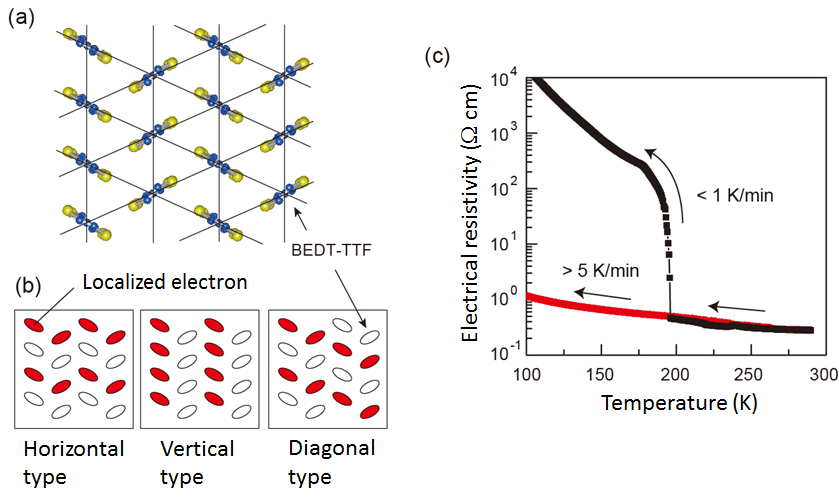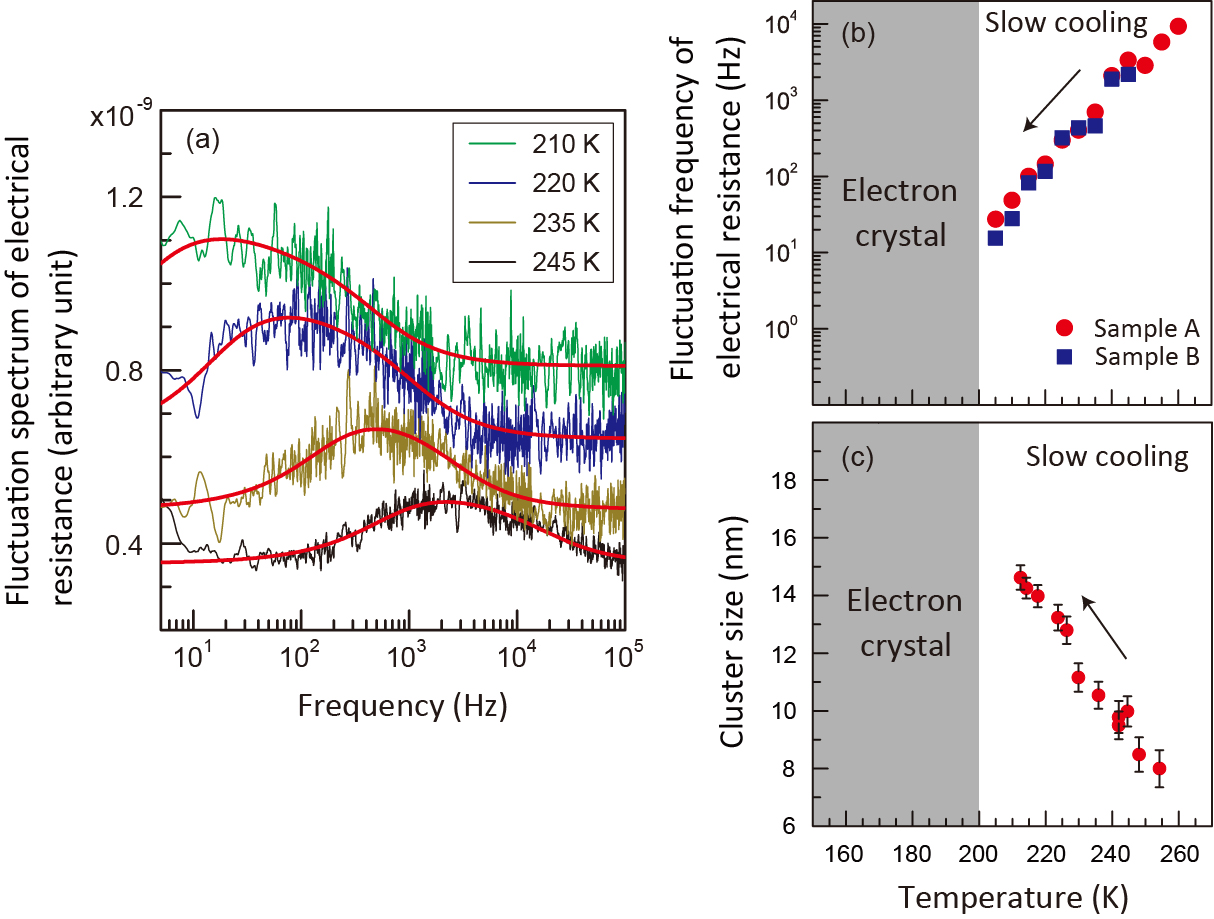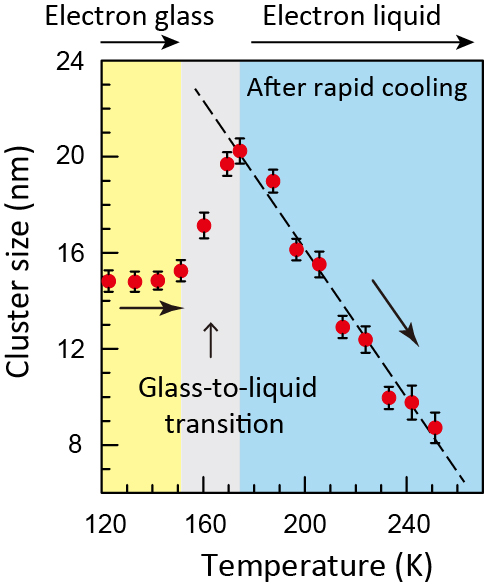Press Release
Formation of an electron glass state
June 14, 2013
The University of Tokyo
High Energy Accelerator Research Organization, KEK
The research group led by Assistant Professor Fumitaka Kagawa, Professor Yoshinori Tokura, et al., School of Engineering, the University of Tokyo, found that an electron glass state is formed upon the rapid cooling of a layered organic compound θ-(BEDT-TTF)2RbZn(SCN)4 (θ-RbZn in the following), which is characterized by a triangular lattice.
In a strongly correlated electron system, we often find that electrons, which move around like a liquid in ordinary circumstances, are localized and crystallize at low temperatures. It has not been shown, however, that rapid cooling hinders crystallization and leads to a glass state in an electron system.
Upon slow cooling to below 200 K, θ-RbZn, which has a triangular-lattice-based crystal structure, becomes an insulator because a electron crystal with horizontally arranged electrons is formed (Figure 1). The research group evaluated the fluctuations in the electrical resistance of θ-RbZn in the electron liquid state at temperatures exceeding 200 K, with a resolution of 10 μs. It was found that in the electron liquid state, fluctuations occur in the frequency range of several hertz to about 100 Hz at ≈200 K (Figure 2 (a)&(b)). Professor Reiji Kumai, Professor Yoichi Murakami, et al., Institute of Materials Structure Science, High Energy Accelerator Research Organization, performed a diffuse scattering experiment through X-ray diffraction at the Photon Factory to clarify the mechanism of fluctuations and found that electrons form a cluster of about 10 nm, and as the temperature is lowered, the cluster size grows and fluctuations slow down (Figure 2 (b)&(c)).
Then, it was found that if the test sample is rapidly cooled down to 120 K and then heated, the cluster size remains constant, irrespective of the temperature in the of 120–160 K. This shows that if cooled rapidly, the cluster does not adopt a long-period crystal structure and remains medium-sized by freezing into a glass state. If the temperature is further increased above 170 K, the cluster starts to shrink with increasing temperature, indicating a transformation into an electron liquid state (Figure 3).
The above results show that we can form an electron glass state by rapid cooling and capture the phase transition (melting) of electron glass to a liquid state at 160–170 K. Our results suggest the universality of glass state formation, irrespective of the constituents of the aggregate. Future progress is expected to improve our microscopic understanding of the formation of electron glasses, including atomic and molecular glasses.

Fig. 1. (a) Crystal structure of the BEDT-TTF molecules of θ-(BEDT-TTF)2RbZn(SCN)4 (θ-RbZn in the following). (b) Conceivable sequence patterns of electron crystals. Only the horizontal type is observed in θ-RbZn at low temperatures. (c) Temperature dependence of electrical resistivity. If cooled at less than 1 K/min, electrons crystallize at 200 K and the electrical resistance increases, while if cooled at more than 5 K/min, electron crystallization does not occur and the electrical resistance remains relatively low.

Fig. 2. (a) Fluctuation spectrum of electrical resistance. (b) Temperature dependence of fluctuation frequency. (c) Temperature dependence of the electron cluster size evaluated by X-ray diffraction. All measurements were performed in an electron liquid state, at temperatures above 200 K.

Fig. 3. Temperature dependence of electron cluster size, observed in the heating process after quenching.
[ Media Contact ]
School of Engineering, The University of Tokyo
TEL: +81-3-5841-1790
E-mail: kouhou@pr.t.u-tokyo.ac.jp
Public Relations Office, High Energy Accelerator Research Organization (KEK), Japan
TEL: +81-29-879-6047
FAX: +81-29-879-6049
E-mail: press@kek.jp